Struggling to incorporate wireless mics with your DJ controller live performance rig?
Properly interfacing wireless microphones with DJ mixers is crucial for delivering clear vocals and instrument sounds to enhance the listener experience.
Let’s dive into the key steps for connecting wireless mics to DJ controllers so your next gig sounds amazing.
How to Connect a Wireless Microphone to a DJ Controller
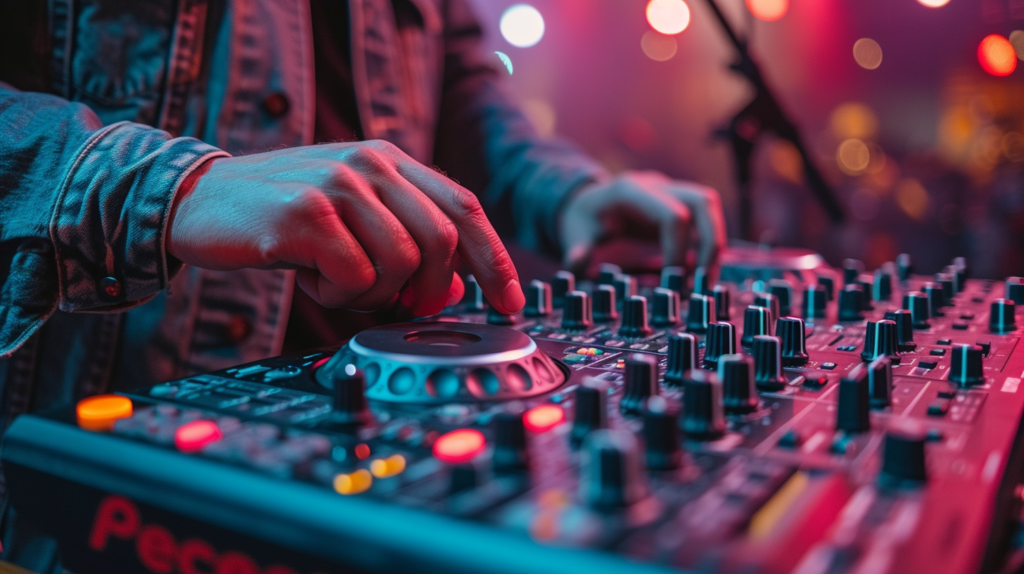
Connecting a wireless microphone to a DJ controller setup allows live vocalists and musicians to accompany recorded music playback. Their voices and instruments blend in the house sound system mix for more dynamic show programming. We’ll explore the equipment connections and configuration steps below to pull this off seamlessly.
Choose Compatible Equipment

When connecting a wireless microphone system to a DJ controller, it is important to first ensure that the gear you have chosen is actually compatible and designed to work together. There are a few key factors to consider in assessing compatibility. First, look at the wireless microphone receiver and verify what kind of output connections it offers. Many professional wireless mic receivers designed for live sound applications will have an XLR or 1/4″ balanced output which can plug right into a mixer mic input. However, some more basic wireless systems may only have an unbalanced RCA style line-level output.
The second factor is to check what kind of inputs are available on your DJ controller or mixer. Most DJ mixers have one or more balanced XLR or 1/4″ TRS mic level inputs which also provide phantom power for condenser microphones. If your DJ controller does not have an appropriate mic level input, check if it at least has some auxiliary line inputs via RCA connectors that you could use with the wireless receiver instead. You will get lower gain/volume this way but it can work in a pinch.
It is also a good idea to consider the wireless transmission protocol used by the microphone system. Professional UHF frequency wireless systems tend to be more reliable with better sound quality compared to consumer grade units. Make sure the wireless mic is compatible with the wireless frequency regulations for your geographic area.
Connect Wireless Mic Receiver to DJ Controller
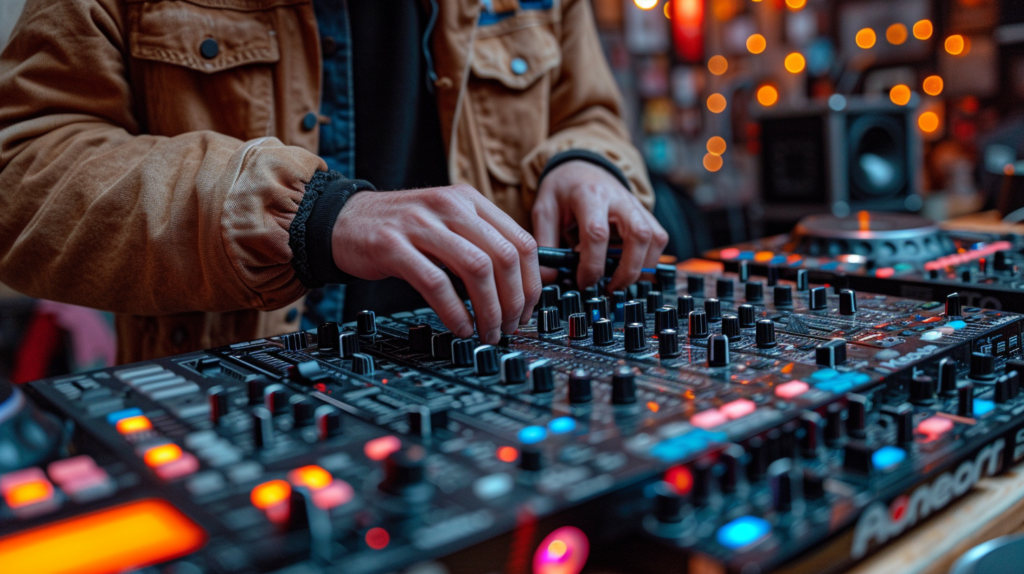
Once you have confirmed compatibility between the equipment, connecting the wireless microphone receiver output to the DJ mixer inputs is simple. For professional wireless mic receivers with XLR or 1/4″ outputs, you would run a standard balanced mic cable from the receiver output into one of the mic inputs on the DJ mixer. The mic input needs to be enabled and the gain adjusted to an appropriate level for your setup.
If your wireless mic receiver only has an unbalanced RCA output, connect it instead to an open line level input on the DJ mixer using a stereo or mono RCA audio cable. You still need to enable that input channel and adjust the gain as needed. The wireless mic audio may have less overall gain coming through this way but it will still work.
All connections should be made securely using good quality cables but also provide easy access in case adjustments need to be made during a performance or event. Allow sufficient slack for moving gear around as needed. Apply cable management techniques to keep loose wiring from getting tangled up during transport and setup.
Configure DJ Controller Settings
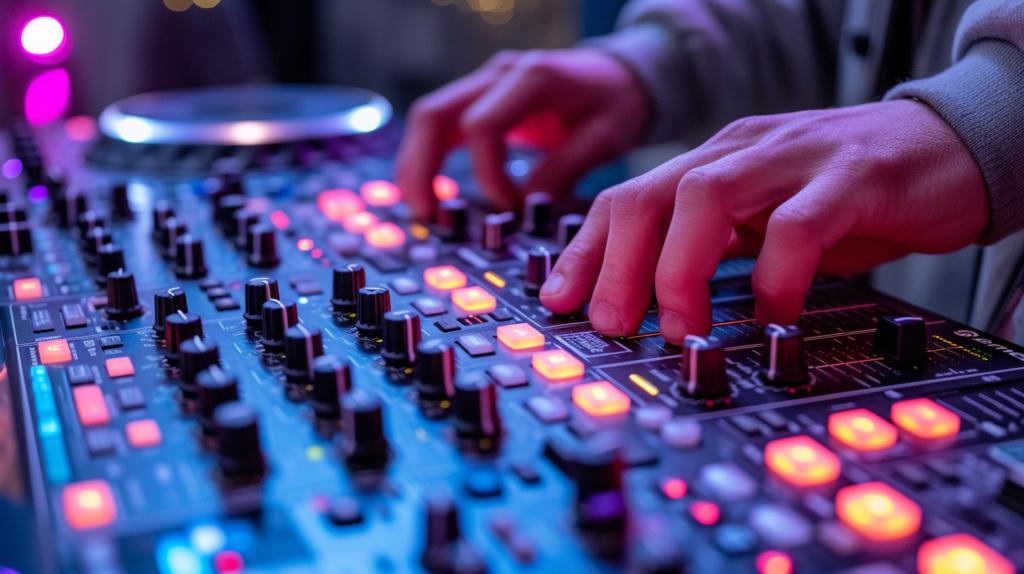
After connecting the wireless microphone receiver output physically to the DJ mixer inputs, some additional configuration steps need to be taken in terms of enabling channels and dialing in the right gain structure. Most DJ mixers provide switchable phantom power to accommodate both dynamic and condenser microphones. Make sure this switched on if connecting a condenser wireless microphone.
Next find the mixer input channel that corresponds to where you plugged the wireless receiver in. It needs to be enabled, typically by just turning up the channel fader. Then slowly raise the trim or gain knob for that channel while speaking into the wireless microphone until you see the signal LEDs come on. Find the point right before the input starts to clip or overload and back it down slightly from there. This properly sets the gain staging between the wireless mic and the DJ mixer.
Finally, route or assign that mixer input channel to the master output so that the wireless microphone audio will be sent out to the speakers along with the music tracks playing. The channel output routing matrix on the DJ mixer allows flexible assignment of any input channel to one or multiple master outputs. This allows DJs to incorporate external audio sources like wireless mics in their performance mix.
Set Up and Test Wireless Microphone
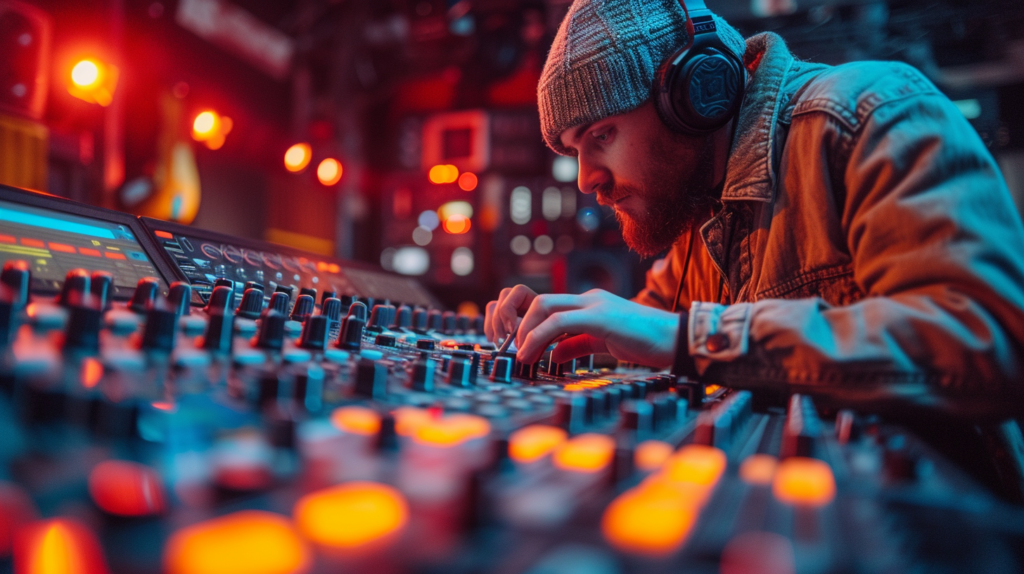
Before using the wireless mic system in an actual live performance setting, it is highly recommended to set it up and thoroughly test the operation plus audio signal path. Power on the wireless microphone receiver first and then turn on the handheld wireless microphone transmitter. Refer to the instructions for the wireless system to sync the transmitter and receiver if needed.
Have someone stand near the middle of the performance area and speak or sing into the wireless mic at the same general voice level that will be used during the actual show. The wireless mic receiver should pick this up and you should see the corresponding signal LEDs activate on both the receiver and the DJ mixer channel input. There may also be a normal amount of ambient noise if the gain trim is turned up higher.
While audio is passing through the wireless mic into the DJ mixer, adjust the mixer channel fader and master levels to get a well balanced blend between the test wireless mic audio and pre-recorded music tracks playing on other channels. Do several basic sound checks this way to confirm sufficient wireless coverage is available in all necessary areas of the venue or performance space before the audience arrives.
Optimize Placement for Wireless Signal
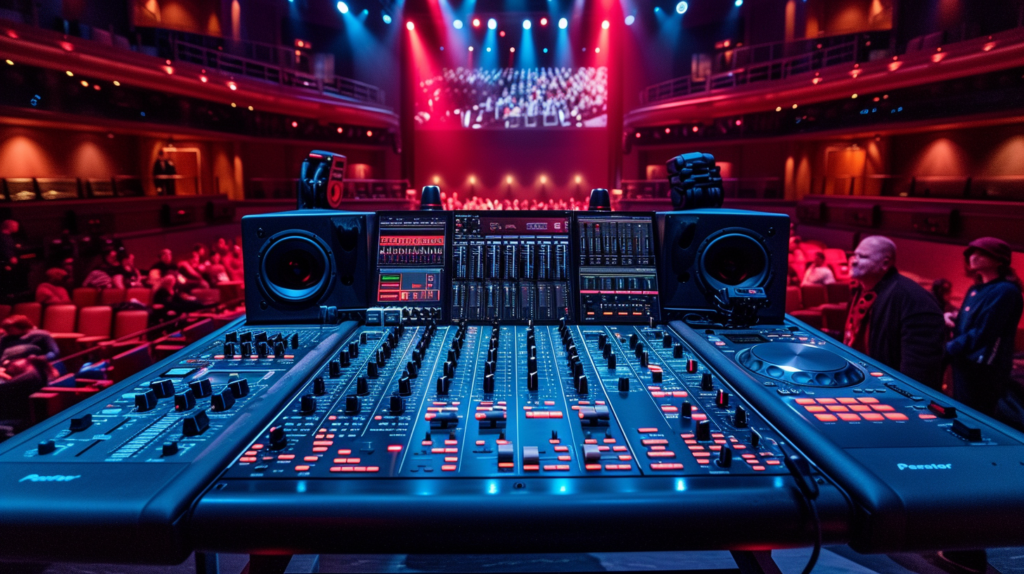
Setting up wireless microphone systems properly helps ensure no loss of audio signal during critical moments of a live performance. One of the key optimization factors is placing the wireless receiver in a central area that is as close as possible to the performers but still easily accessible for technicians at the soundboard.
Maintaining line of sight between the wireless mic transmitter and receiver is also beneficial. If performers need to roam around a large stage or venue, consider adding a remote receiver antenna strategically positioned on the opposite side as the main receiver to expand coverage area. Professional wireless mics that use diversity reception with dual antenna inputs avoid signal drops from interference better than single input designs.
Additionally, keeping the wireless mic receiver properly positioned away from thick metal objects or lighting grids helps maximize reception quality and range. Metal can introduce multipath signal distortion while stage lighting equipment can potentially generate wireless interference. Mount receivers on non-conductive stands and elevate above the ground if possible.
Having sufficient wireless microphone gain before feedback depends heavily on loudspeaker placement as well. Make sure stage monitors are positioned correctly and EQed properly so that mic users can hear themselves. Keep main PA speakers aimed at the audience area and away from the stage to allow maximum gain to be achieved.
Practice Mixing Wireless Mic with Other Sources

Even experienced audio engineers need practice incorporating external sound sources like wireless mics with DJ music program material. The blend of vocal tracks and instrument sounds needs to fit well together in order for it to sound appealing to audience members. Advise wireless mic users to rehearse their parts along with pre-recorded music tracks playing over the PA system several times.
Listen critically for ringing or feedback indicating potential sound system issues and make any needed adjustments to EQ or arrangement. Add compressors/limiters if necessary to tame vocal dynamics picking up on open mics. The rehearsal period also allows the DJ or audio engineer to refine fader moves when bringing wireless mic contributors up or down in the mix. Smoothly transitioning wireless mics in and out of different song sections greatly improves the cohesiveness of a hybrid music production.
With repeated run-throughs, performers using wireless mics become more confident and comfortable hearing themselves while also clearly discerning backing music parts. This results in much tighter timing and better musical connection with the DJ controller driven playback material. Audiences can really sense that cohesion and it makes for a much more professional overall impression when Rest practice and preparation results in well balanced, expertly mixed musical presentation.
Conclusion
In summary, connecting a wireless microphone system to a DJ controller requires checking equipment compatibility, making the correct physical audio connections, configuring mixer settings properly, optimizing wireless placement, and sufficient practice mixing the wireless mic audio with recorded music playback. Following the setup recommendations in this guide will ensure your wireless mics perform reliably at live shows and events and integrate smoothly into your DJ mixes and music programming without issues. The audience experience will be vastly enhanced when vocals, MCs, and instruments have a balanced blend in the house sound system mix.
